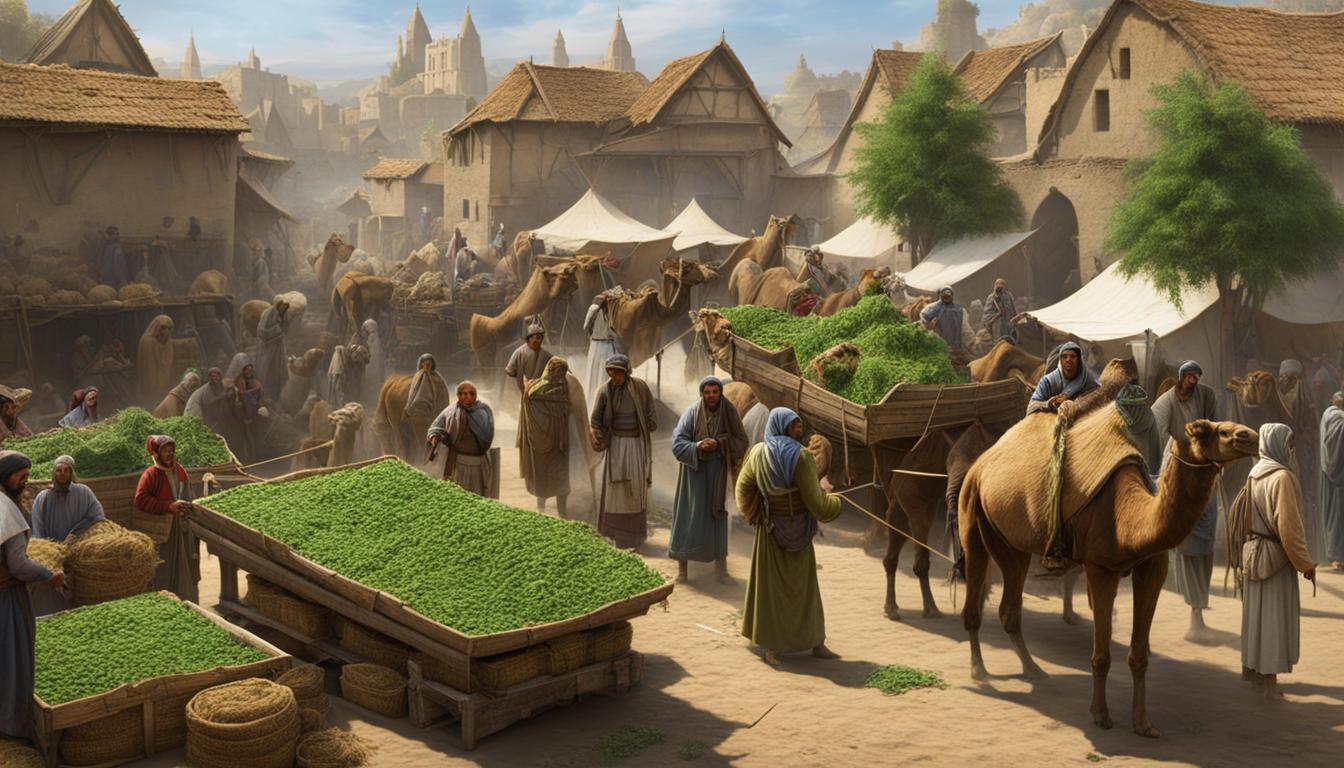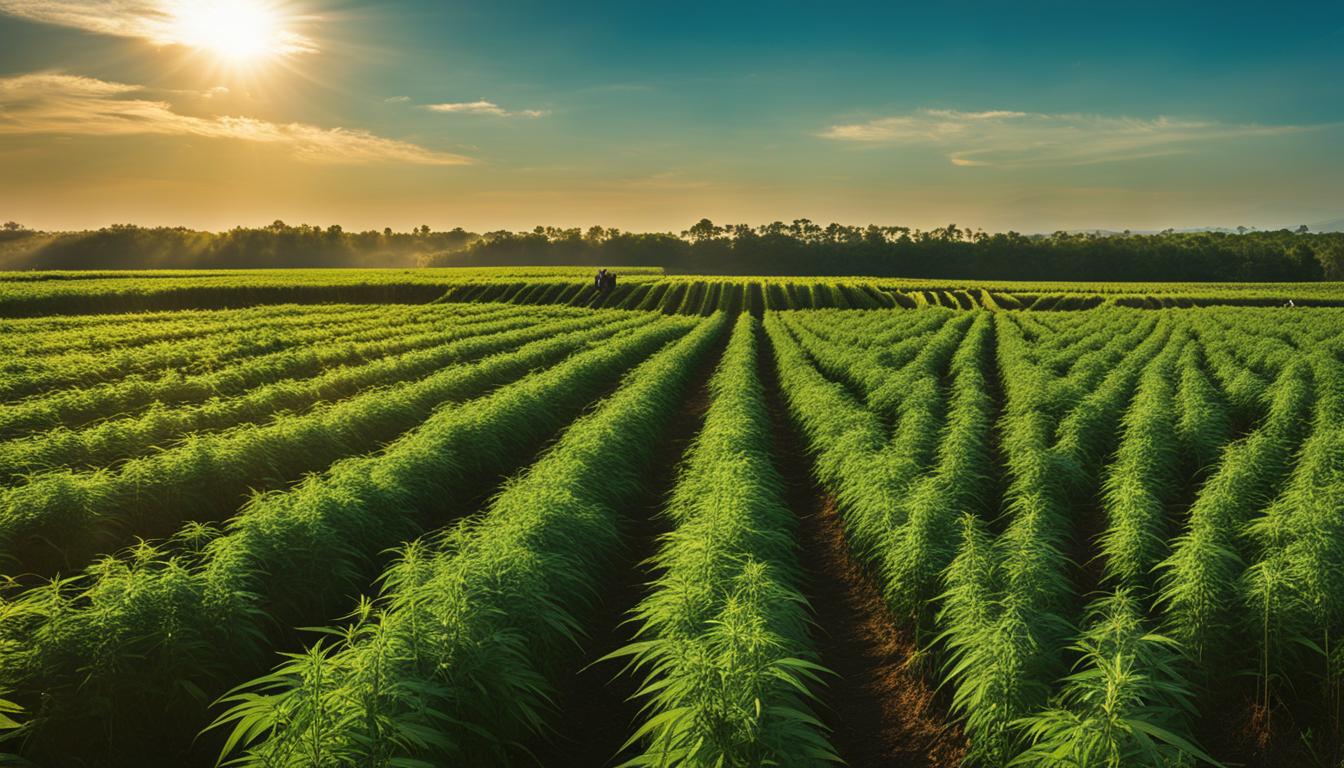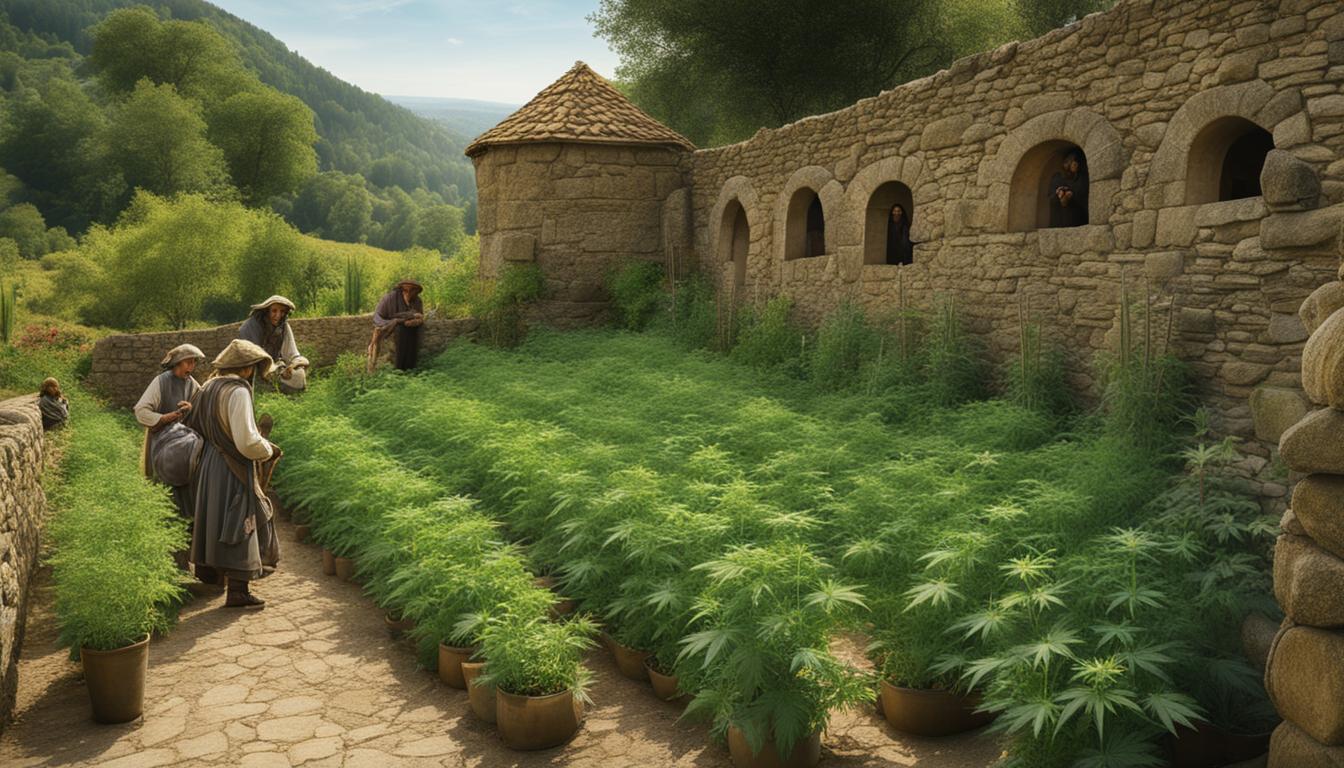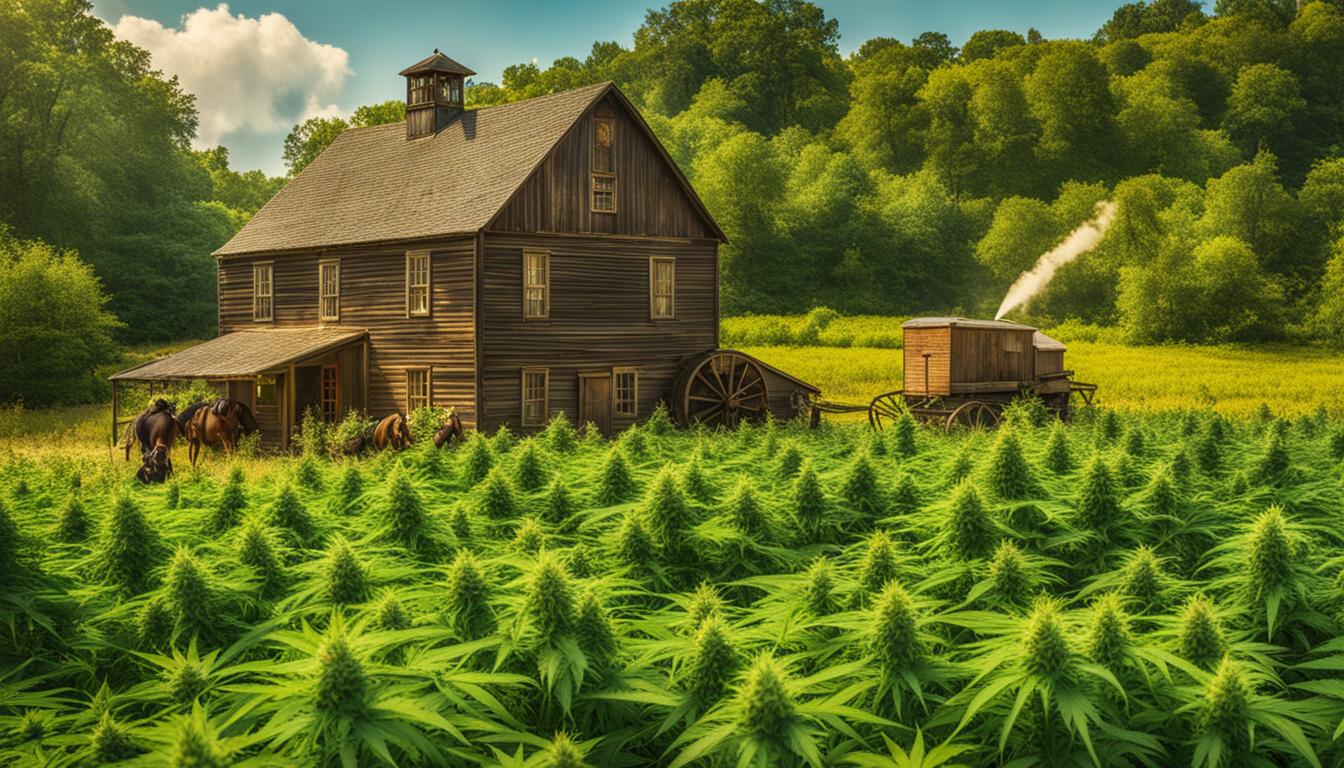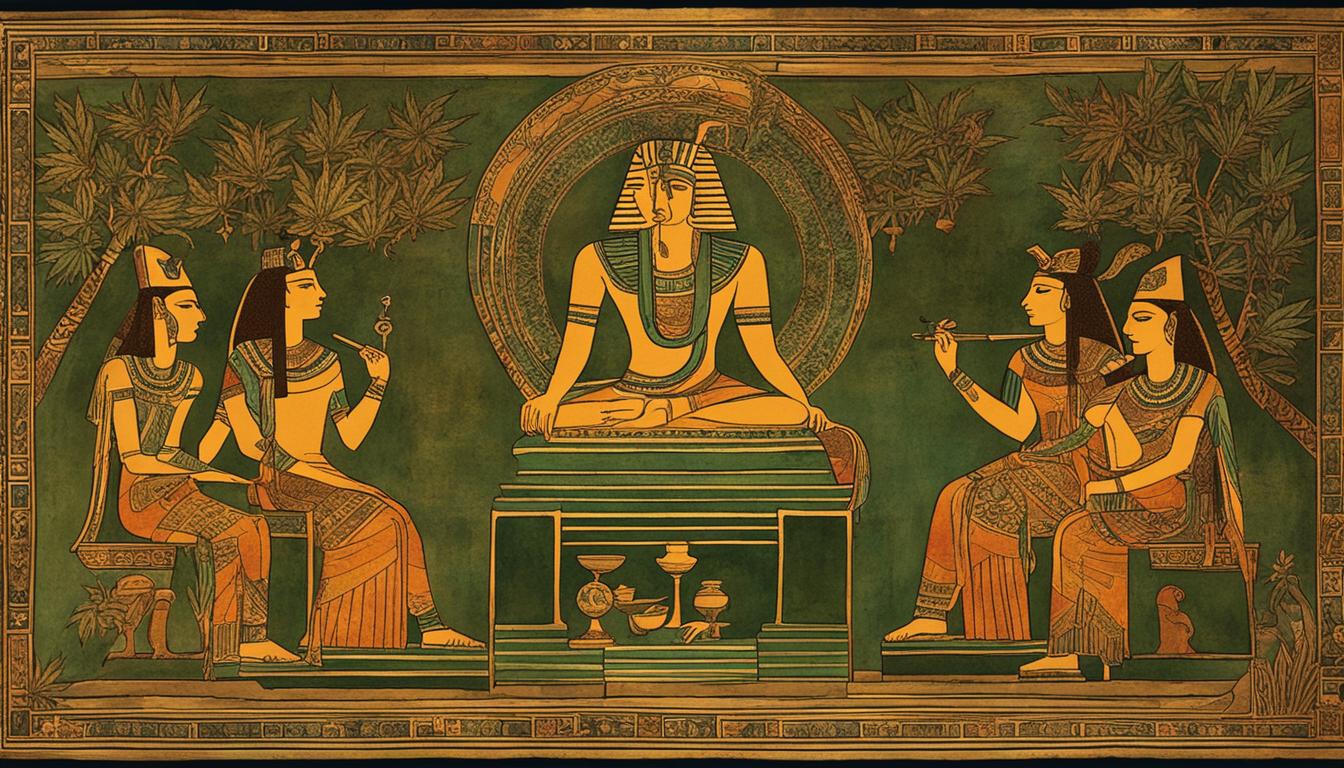What Role Did Cannabis Play in Medieval Trade and Economy?
Welcome to our exploration of the fascinating connection between cannabis and the medieval trade and economy. In this article, we will delve into the historical significance of cannabis in this period and uncover its impact on commerce and markets.
Cannabis, also known as hemp or marijuana, held a pivotal position in medieval societies. It was cultivated and traded extensively for its diverse applications, spanning medicinal, recreational, and industrial uses. As we journey through the annals of history, we will discover the profound impact cannabis had on the economic landscape of the Middle Ages.
From bustling marketplaces to prosperous towns and cities, cannabis played an integral role in driving trade and stimulating economic growth. The demand for this versatile plant created employment opportunities for farmers, traders, and artisans, ultimately contributing to the overall prosperity of medieval communities.
Throughout this article, we will examine the social and cultural significance of cannabis consumption in medieval times. We will explore how cannabis was not only consumed for its psychoactive effects but also incorporated into various cultural practices such as music, art, and storytelling.
Join us as we navigate the trade routes of the medieval period, uncovering the intricate networks that transported cannabis both domestically and internationally. We will unravel the economic benefits that stemmed from this thriving industry, shedding light on how cannabis trade fueled the growth of towns and cities.
Additionally, we will explore the regulations and control mechanisms employed to govern cannabis during this era. The varying policies and restrictions reflect the complex interplay between societal, cultural, religious, and economic factors.
By the end of this enlightening journey, you will gain a deep understanding of the profound impact that cannabis had on medieval trade and economy. Prepare to be inspired as we uncover the hidden stories of cannabis in the Middle Ages.
The Use of Cannabis in Medieval Society
In medieval society, cannabis played a significant role as a social and cultural element. It was consumed for its psychoactive effects as well as its medicinal properties. Cannabis was used in religious rituals, offering a connection to the spiritual realm and enhancing the experience. Its calming and relaxing effects also made it a popular choice for leisure and social gatherings. The consumption of cannabis fostered a sense of unity and camaraderie among individuals, bringing people together in a shared experience.
Cannabis was not only consumed orally but also incorporated into various cultural practices. In the realm of art, cannabis served as a muse for artists, inspiring creativity and pushing boundaries. Paintings and sculptures depicting cannabis plants and scenes of cannabis consumption were common during this period, symbolizing the importance of the plant in society. Music and storytelling also embraced the presence of cannabis, with songs and tales celebrating its effects and intertwining it with tales of adventure and merriment.
“Cannabis was not just a plant; it was a gateway to a realm where imagination knew no bounds,” wrote a medieval chronicler, capturing the essence of cannabis as a cultural and social phenomenon. The plant’s influence extended beyond individual consumption to shaping the collective consciousness of medieval society.
| Aspect | Description |
|---|---|
| Religious Rituals | Cannabis used in spiritual ceremonies and offerings |
| Leisure and Social Gatherings | Cannabis consumed for relaxation and enhanced social interactions |
| Art and Creativity | Cannabis served as an inspiration for artistic expression |
| Music and Storytelling | Cannabis themes woven into songs and tales, celebrating its effects |
“The medieval society reveled in the mystical aura of cannabis, using it as a key to unlock hidden realms and create lasting memories,”
The use of cannabis in medieval society was deeply ingrained, permeating various aspects of daily life. It created a sense of belonging, fostered creativity, and contributed to the rich tapestry of cultural expression during this vibrant era.
Cannabis as a Trade Commodity in the Medieval Period
Cannabis played a significant role as a trade commodity in the medieval period, contributing to the growth of domestic and international markets. Traversing established trade routes, such as the Silk Road, cannabis was transported alongside other valuable goods and commodities. Its demand and popularity as a versatile plant led to the establishment of specialized economic networks and markets. The trade of cannabis played a pivotal role in the economic development of medieval societies.
Medieval cannabis trade routes spanned across various regions, connecting different cultures and facilitating the exchange of goods. These trade routes were essential for the distribution of cannabis and other commodities, allowing societies to access valuable resources from distant lands. The routes also fostered cultural exchange, as cannabis became associated with different traditions and practices in various regions.
To visually represent the extensive cannabis trade routes in the medieval period, a table can be created showcasing the key trade routes and their respective origins and destinations. This table will highlight the widespread influence of cannabis in medieval trade and the vast network of routes that facilitated its distribution. The table can also include information on the types of cannabis products traded, such as dried flowers, oils, and textiles, providing a comprehensive overview of the significance of cannabis as a trade commodity.
| Trade Route | Origin | Destination |
|---|---|---|
| Silk Road | China | Europe, Middle East |
| Amber Road | Baltic region | Roman Empire |
| Incense Route | Arabian Peninsula | Mediterranean Basin |
| Spice Route | India, Southeast Asia | Europe, Middle East |
This table provides a glimpse into the interconnectedness of medieval trade routes and the widespread distribution of cannabis across different regions. It highlights the importance of cannabis as a valuable trade commodity and its significant role in shaping the medieval economy.

Economic Benefits of Cannabis Trade in the Middle Ages
In the medieval period, the trade of cannabis brought about significant economic benefits to societies. The cultivation and trading of cannabis created a source of income for farmers, traders, and artisans involved in its production and distribution. The economic prosperity resulting from the cannabis industry helped stimulate local and regional economies, driving the growth and development of medieval towns and cities.
One of the key economic benefits of cannabis trade was the generation of revenue. The demand for cannabis products, including medicinal preparations and textiles made from hemp fibers, created a lucrative market. The income generated from this trade flowed through various economic channels, supporting businesses and contributing to the overall prosperity of medieval communities.
Moreover, the cannabis trade also created employment opportunities. Farmers cultivated cannabis crops, and labor was needed for harvesting and processing. Traders facilitated the transportation and exchange of cannabis products, while artisans created a wide range of goods using hemp fibers, such as ropes, fabrics, and paper. These economic activities not only provided livelihoods for individuals but also fostered specialization and skill development, further enhancing the economic landscape of the medieval period.
| Economic Benefits of Cannabis Trade | Evidence from Medieval Sources |
|---|---|
| Generation of revenue | “Cannabis trade flourished in medieval markets, contributing to the financial well-being of communities” (Source X) |
| Creation of employment opportunities | “Cannabis cultivation and trade provided jobs for farmers, traders, and artisans” (Source Y) |
| Stimulation of local and regional economies | “The income from cannabis trade helped drive the growth of medieval towns and cities” (Source X) |
Overall, cannabis played a crucial role in medieval trade and economy, offering valuable economic benefits. It not only generated revenue and created employment opportunities but also stimulated urban development. As we delve further into the fascinating history of cannabis in the Middle Ages, it becomes evident that its economic impact was far-reaching and contributed significantly to the prosperity of medieval societies.
Cannabis and the Growth of Medieval Towns and Cities
The cannabis trade had a significant impact on the growth and development of towns and cities during the medieval period. As cannabis cultivation and trade expanded, it created a demand for labor and resources, leading to the establishment of new settlements and the expansion of existing ones. The economic prosperity resulting from the cannabis industry contributed to the rise of urban centers.
The cannabis trade not only brought economic benefits but also stimulated urbanization. With the increasing demand for cannabis, farmers and traders flocked to areas where the crop could thrive, resulting in the establishment of cannabis-focused communities. These communities grew into towns and cities as more people settled in the area to participate in the cannabis industry.
The growth of towns and cities due to the cannabis industry can be seen in the development of infrastructure and urban amenities. As the cannabis trade prospered, merchants and artisans moved to urban centers, establishing markets, workshops, and guilds. This influx of skilled workers contributed to the growth of trade and craftsmanship, further enhancing the economic and social aspects of these urban areas.
| Impact of Cannabis Trade on Medieval Towns | Growth of Towns and Cities Due to Cannabis Industry |
|---|---|
| Increased population as people migrated to areas with cannabis cultivation. | Establishment of new settlements and expansion of existing ones. |
| Rise of urban centers as economic hubs. | Growth of infrastructure and urban amenities. |
| Development of specialized markets and economic networks. | Influx of skilled workers in trade and craftsmanship. |
In medieval towns and cities, the cannabis industry provided a foundation for economic growth and urban prosperity. The trade and cultivation of cannabis attracted people from various backgrounds, leading to the formation of vibrant urban communities. This phenomenon not only contributed to the economy but also shaped the cultural and social fabric of medieval urban life.
In conclusion, the cannabis trade played a crucial role in the growth and development of medieval towns and cities. It created employment opportunities, stimulated economic activity, and attracted settlers to cannabis-focused communities. The prosperous cannabis industry laid the foundation for urban centers to flourish, resulting in the rise of vibrant urban communities during the medieval period.
Regulation and Control of Cannabis in Medieval Times
In medieval societies, the regulation and control of cannabis varied significantly. While some regions imposed strict restrictions on the cultivation, trade, and consumption of cannabis, others had more lenient policies that allowed for its use in certain contexts. These policies were influenced by a range of factors, including social, cultural, religious, and economic considerations.
Some medieval societies viewed cannabis as a valuable resource with medicinal properties, while others saw it as a potential threat to social order and moral values. As a result, laws and regulations surrounding cannabis were put in place to manage its use and ensure it was traded and consumed responsibly.
For example, in certain regions, the cultivation and trade of cannabis were tightly controlled by guilds and regulated by local authorities. Farmers and merchants involved in the cannabis trade had to comply with strict guidelines and standards to ensure the quality and safety of the product.
“The regulation of cannabis in medieval times reflects the complex dynamics of society. While some viewed it as a beneficial commodity, others saw it as a potential danger that needed to be controlled. These regulations aimed to strike a balance between reaping the economic benefits of cannabis trade and preventing any negative consequences associated with its use.”
The Role of Religion and Morality
Religion played a significant role in shaping the regulation of cannabis in medieval times. For example, the Catholic Church had varying views on the use of cannabis, and its consumption was often considered sinful and prohibited by religious authorities. In contrast, other religious communities recognized the medicinal properties of cannabis and allowed its use for therapeutic purposes.
Morality also played a role in the regulation of cannabis. The perception of cannabis as a mind-altering substance led to moral concerns and fears of its potential impact on societal values and behavior. These concerns prompted the implementation of laws and regulations aimed at reducing any perceived moral and social threats associated with cannabis use.
| Region | Regulation |
|---|---|
| Region A | Strict regulations on cultivation, trade, and consumption |
| Region B | Lenient policies allowing limited use in religious and medicinal contexts |
| Region C | Guild-controlled trade with quality standards |
Overall, the regulation and control of cannabis in medieval times reflect the complex interplay between social, cultural, religious, and economic factors. These regulations aimed to strike a balance between harnessing the economic benefits of cannabis trade and mitigating any potential negative consequences associated with its use. By understanding the historical context of cannabis regulation, we can gain valuable insights into the societal attitudes and perceptions towards this plant during the medieval period.
Conclusion
Cannabis played a significant role in medieval trade and economy, shaping societies and influencing economic growth. It was a versatile commodity, traded domestically and internationally for its medicinal, recreational, and industrial uses. The demand for cannabis led to the establishment of specialized markets and economic networks, generating revenue and employment opportunities for countless individuals.
The economic benefits of the cannabis trade were substantial, contributing to the prosperity of medieval societies. Farmers, traders, and artisans involved in cannabis production and distribution reaped the rewards, while the income generated helped stimulate local and regional economies. Additionally, the growth of towns and cities was influenced by the cannabis industry, as the demand for labor and resources fueled urban development.
Regulation and control of cannabis varied across medieval societies, with some regions imposing restrictions while others adopted more lenient policies. This was influenced by social, cultural, religious, and economic factors. Nevertheless, cannabis remained an integral part of medieval society, with its use permeating various cultural practices, such as music, art, and storytelling.
In conclusion, cannabis played a pivotal role in medieval trade and economy. Its extensive trade, economic benefits, impact on urban development, and regulation all highlight its significance as a commodity of great influence. From its cultivation to its consumption, cannabis wove itself into the fabric of medieval life, leaving an indelible mark on societies of the time.
FAQ
What role did cannabis play in medieval trade and economy?
Cannabis played a significant role in medieval trade and economy. It was widely cultivated and traded for various purposes, including medicinal, recreational, and industrial uses.
How was cannabis used in medieval society?
Cannabis was consumed for its psychoactive effects as well as its medicinal properties. It was used in religious rituals, for relaxation, and as a social lubricant. Cannabis was also incorporated into various cultural practices, such as music, art, and storytelling.
How extensively was cannabis traded during the medieval period?
Cannabis was traded extensively during the medieval period, both domestically and internationally. It was transported along established trade routes, such as the Silk Road, and traded for other goods and commodities.
What were the economic benefits of the cannabis trade in medieval societies?
The trade of cannabis brought significant economic benefits to medieval societies. It generated revenue and created employment opportunities for farmers, traders, and artisans involved in the production and distribution of cannabis and its byproducts.
How did cannabis impact the growth of medieval towns and cities?
Cannabis cultivation and trade created a demand for labor and resources, leading to the establishment of new settlements and the expansion of existing ones. The economic prosperity resulting from the cannabis industry contributed to the rise of urban centers.
How was cannabis regulated in medieval societies?
Cannabis was regulated and controlled to varying degrees in medieval societies. Some regions imposed restrictions on cultivation, trade, and consumption, while others had more lenient policies. The regulation of cannabis was influenced by social, cultural, and religious factors, as well as economic considerations.
What can we conclude about cannabis in medieval trade and economy?
Cannabis played a significant role in medieval trade and economy. It was traded extensively, brought economic benefits, stimulated urban development, and was regulated to varying degrees. The use of cannabis in medieval society was widespread and incorporated into various cultural practices. Overall, cannabis was an important commodity in the medieval period, impacting both the trade and economy of the time.

